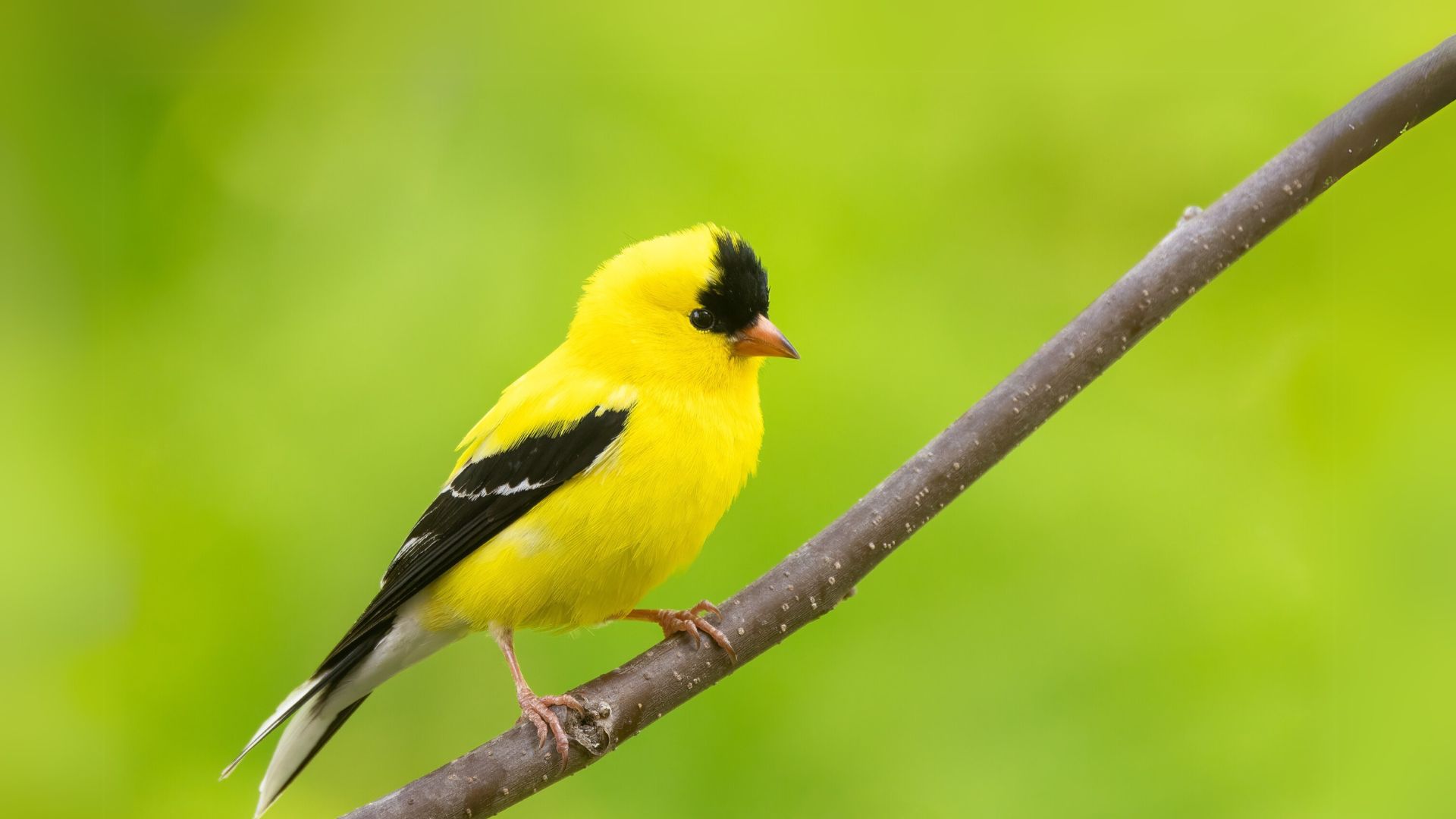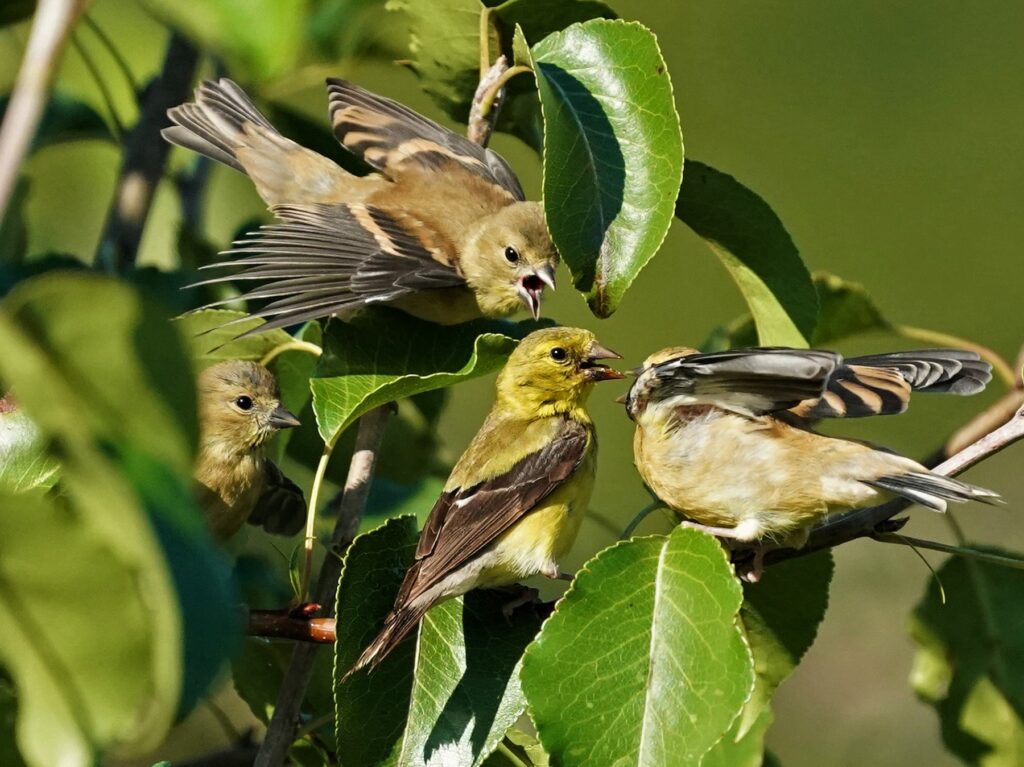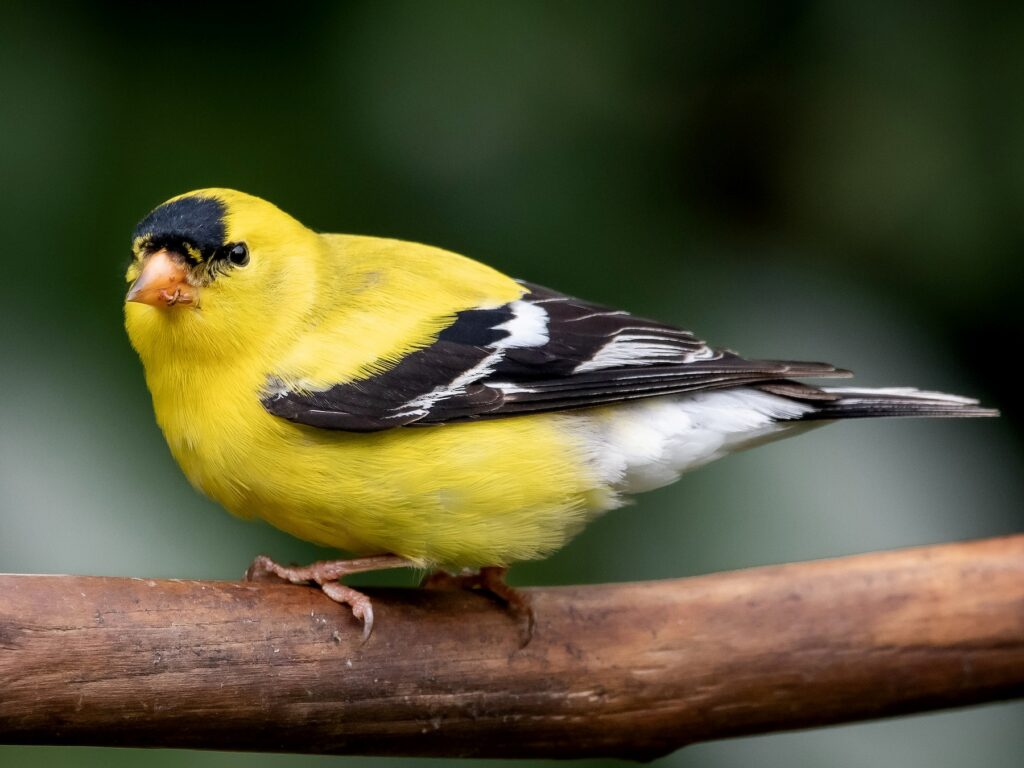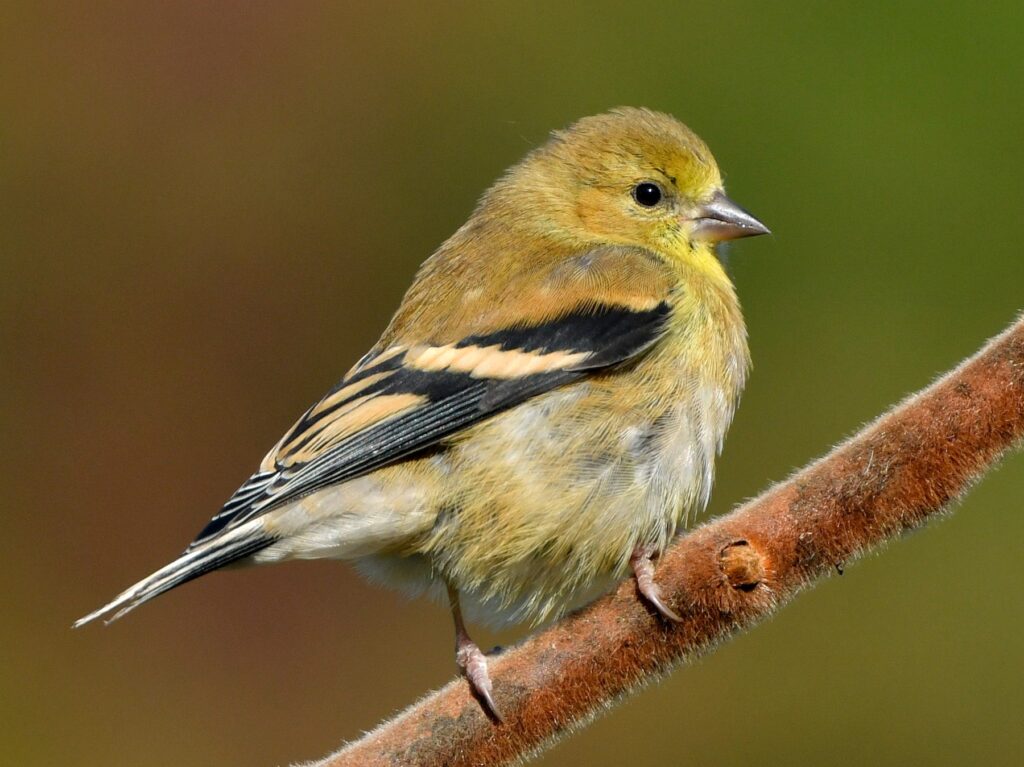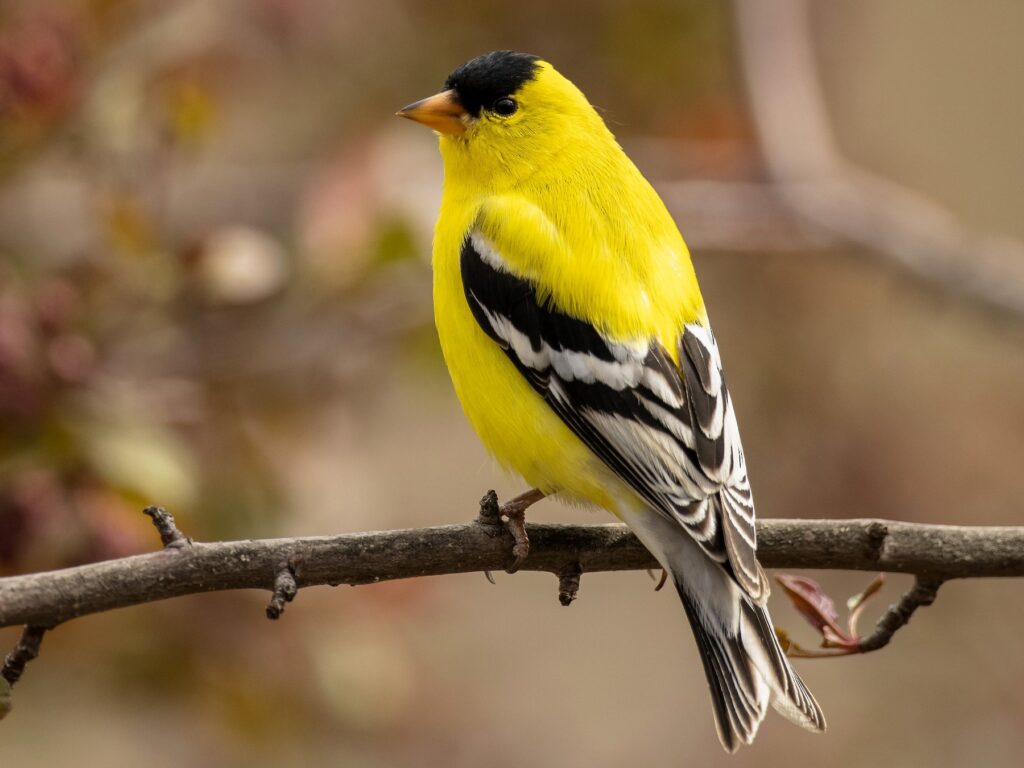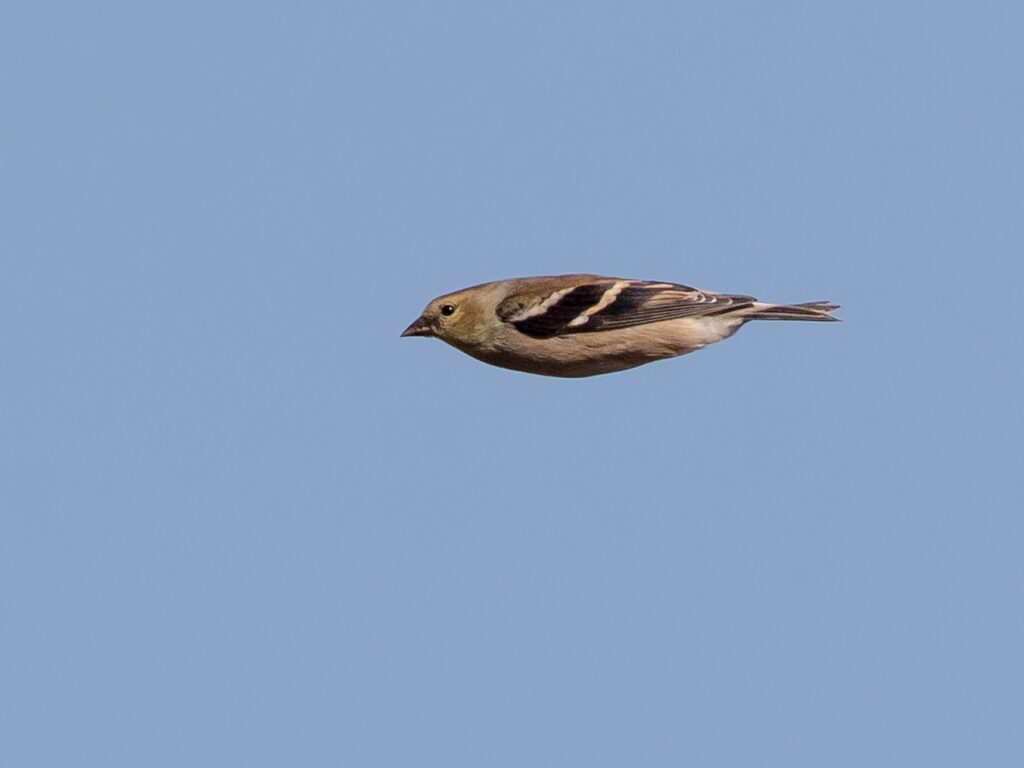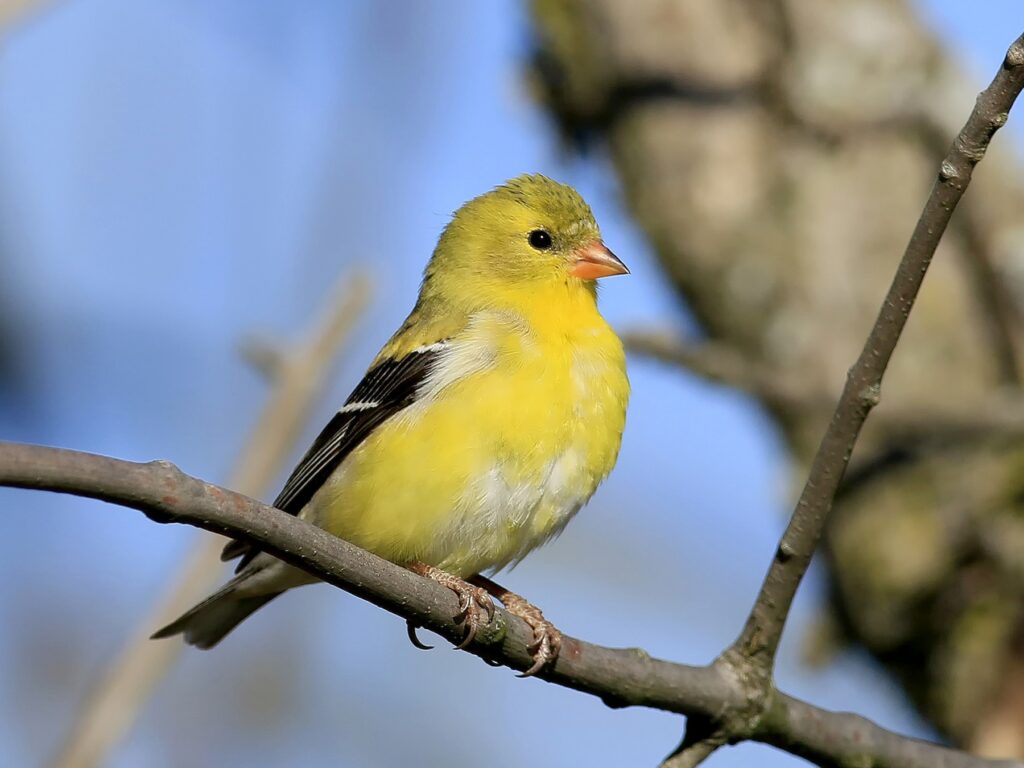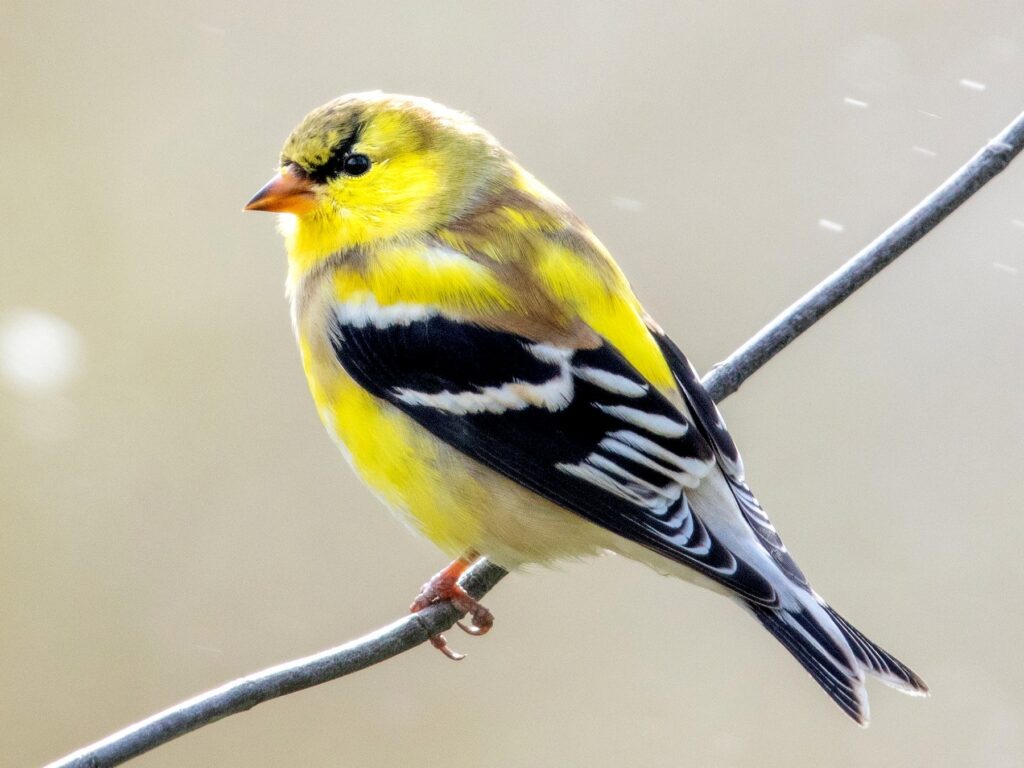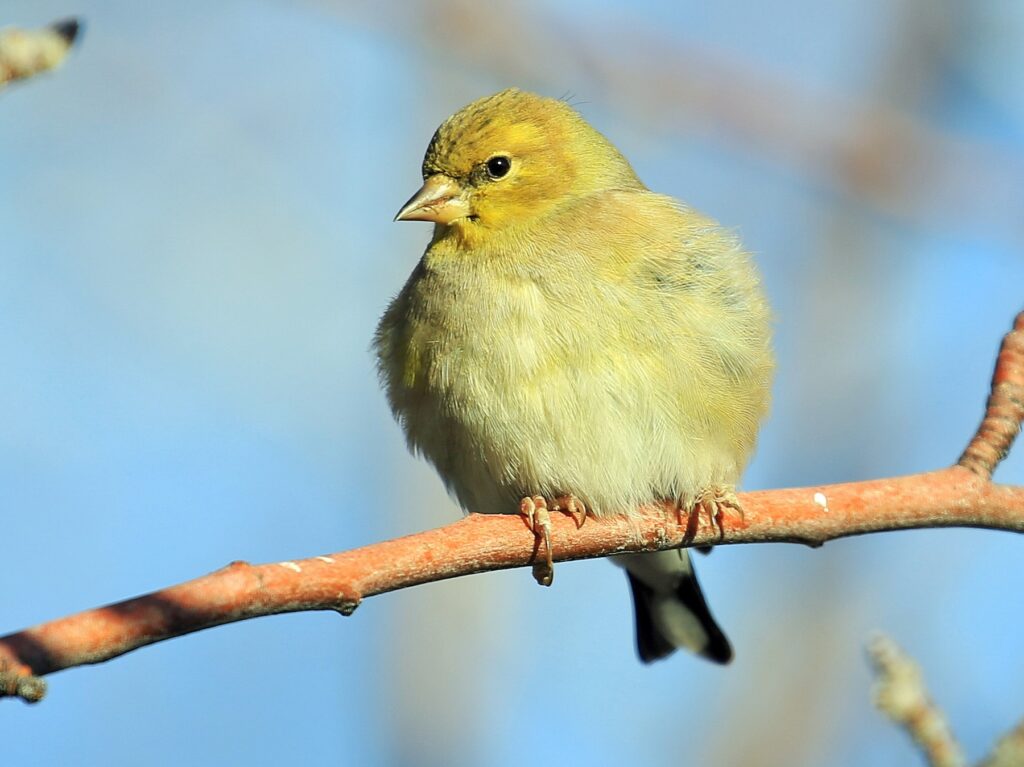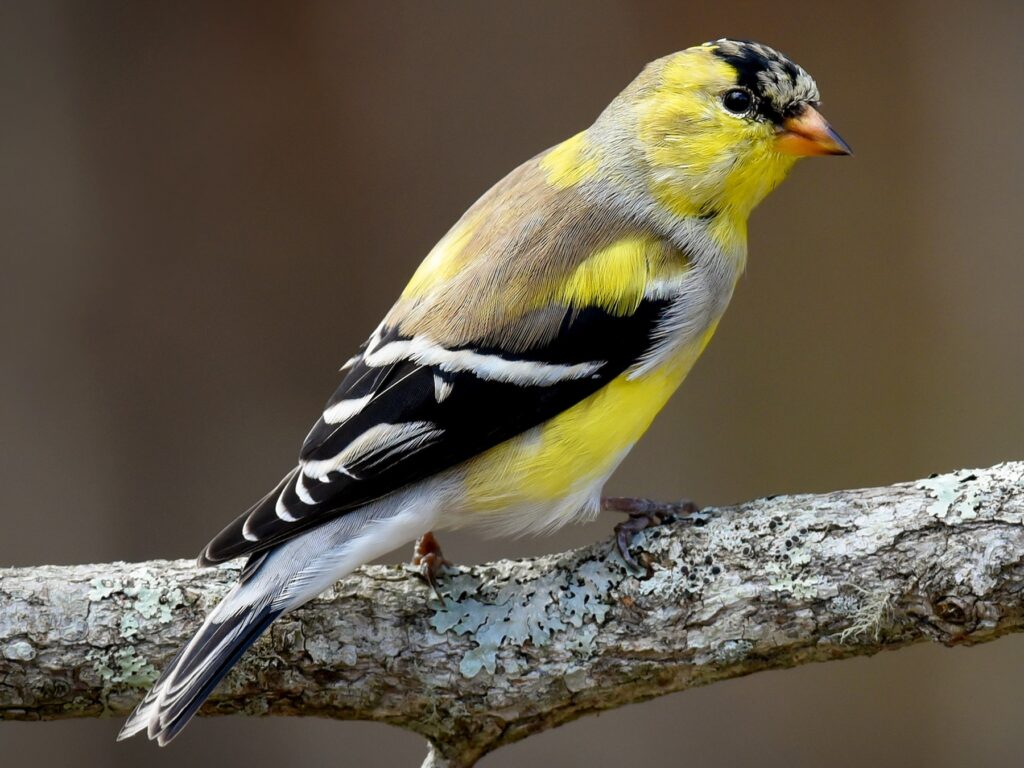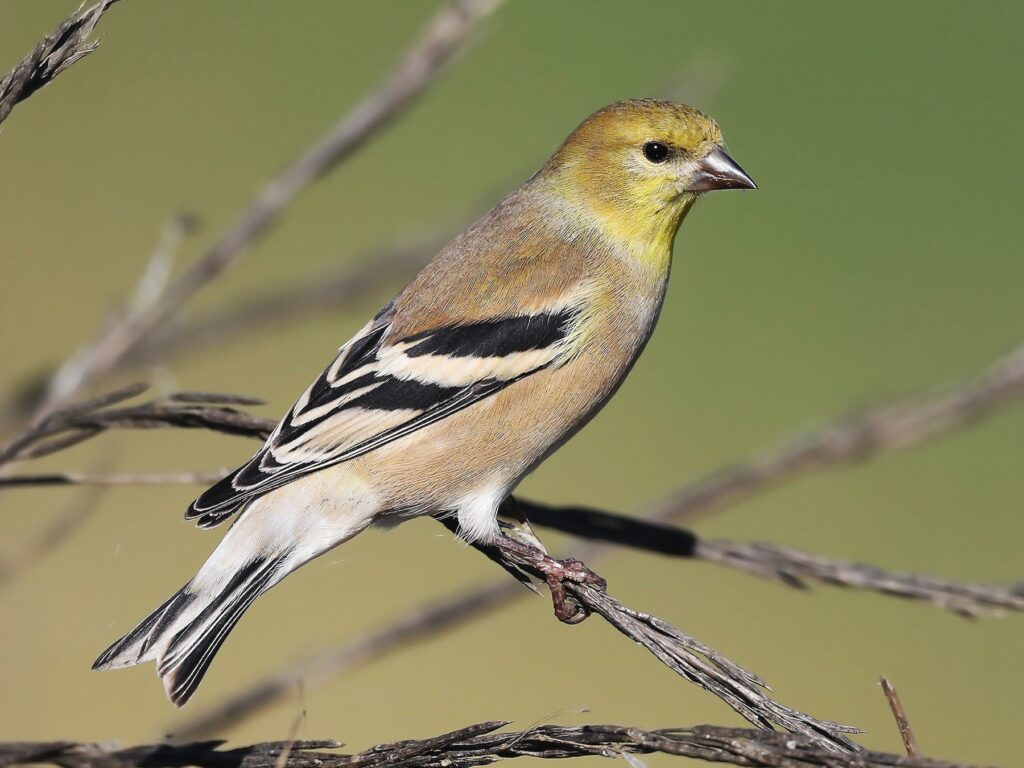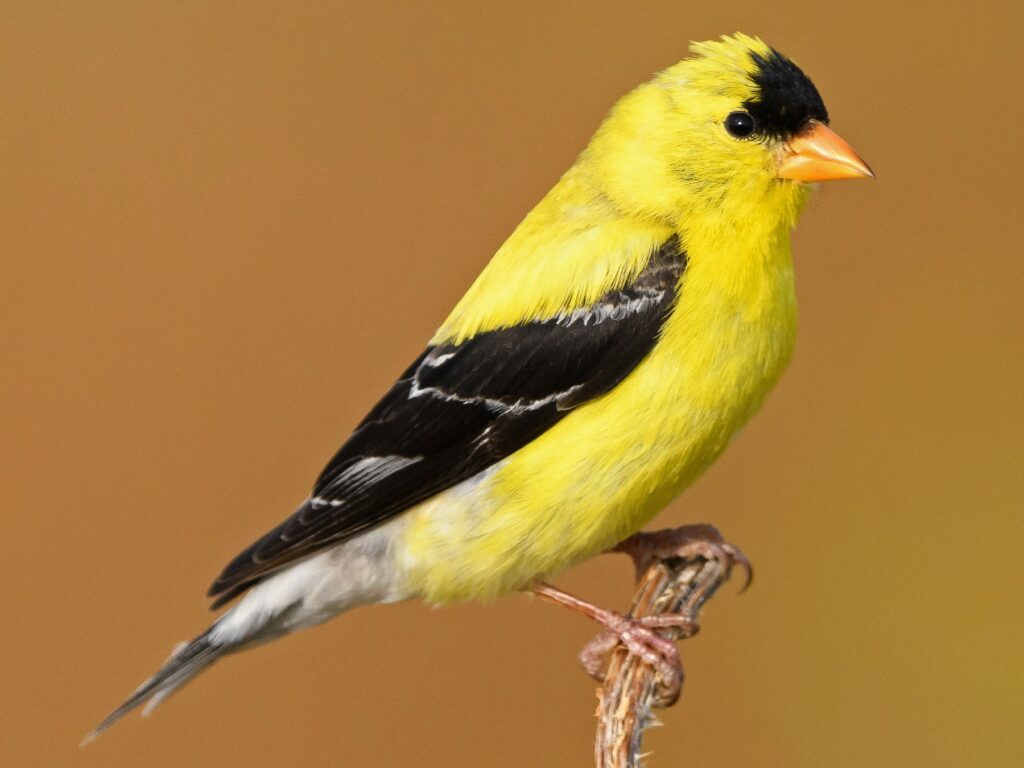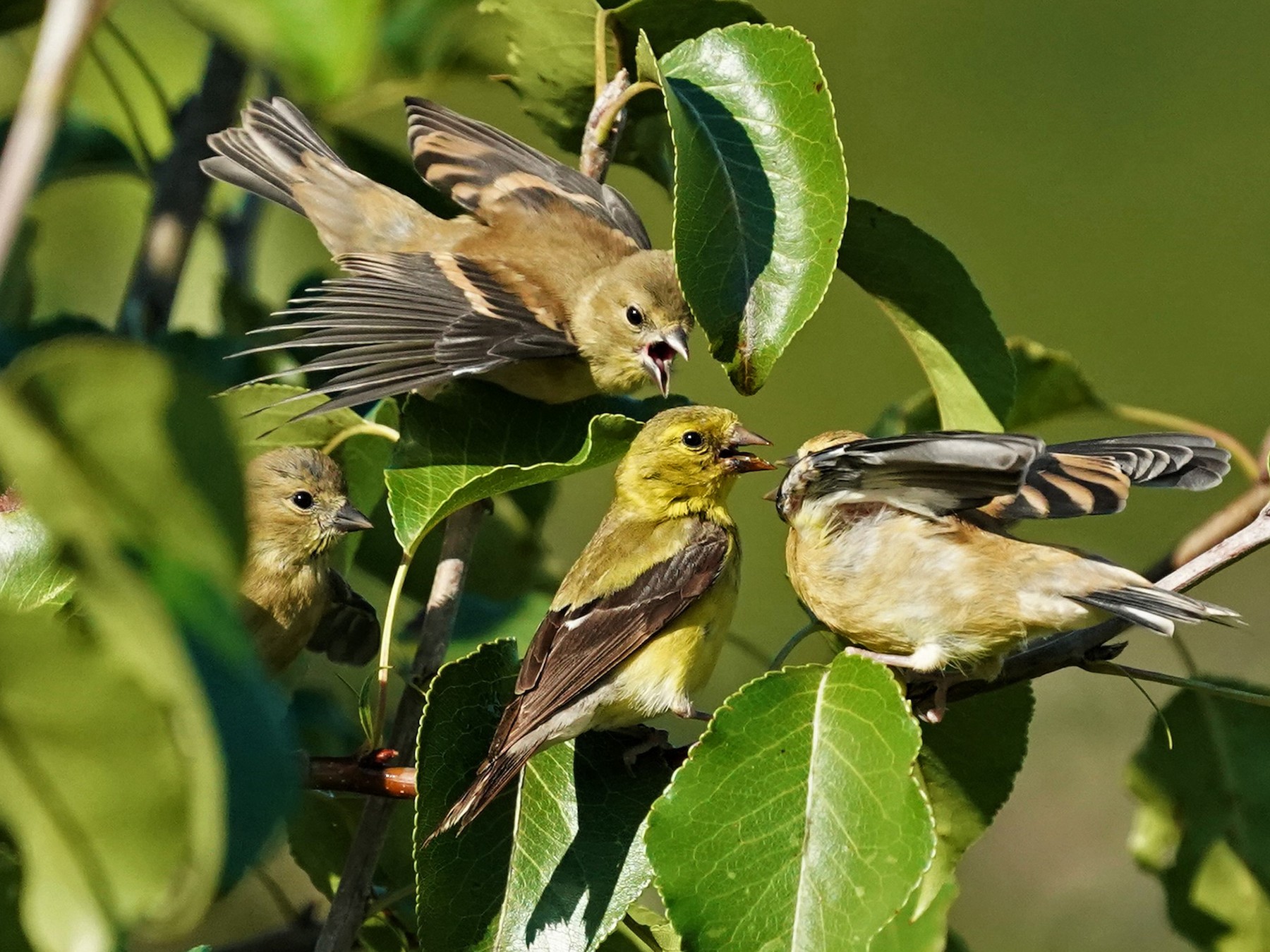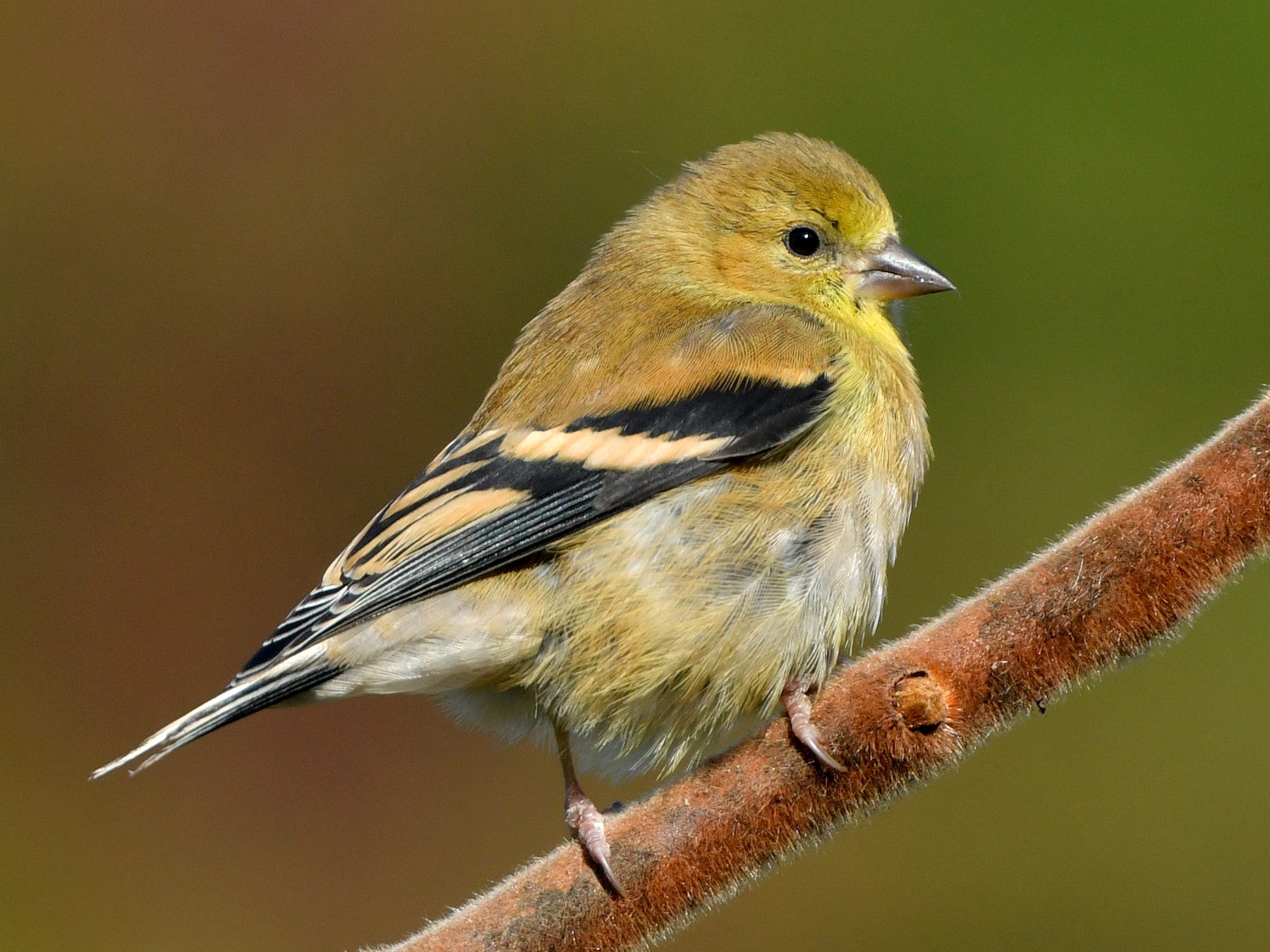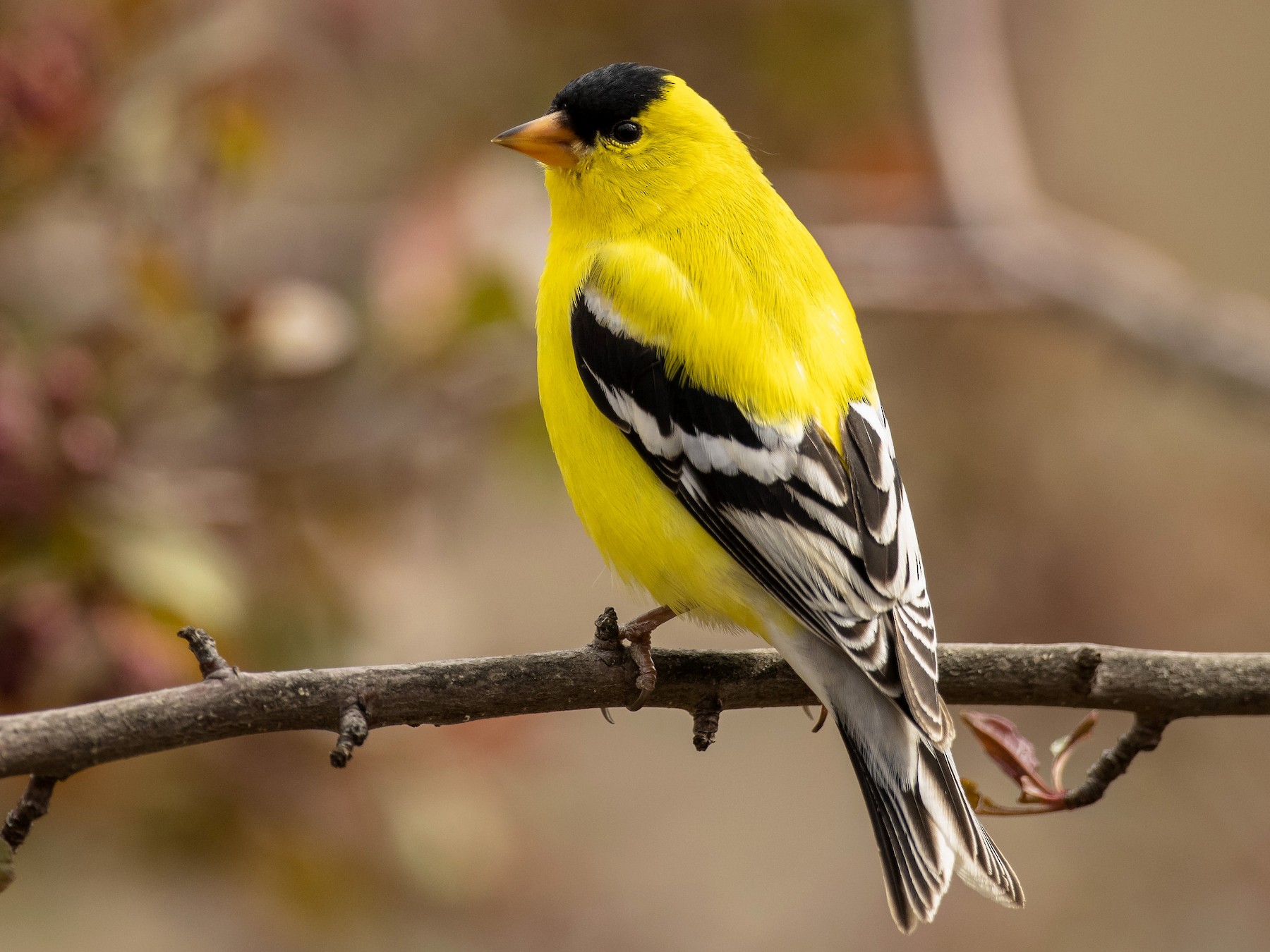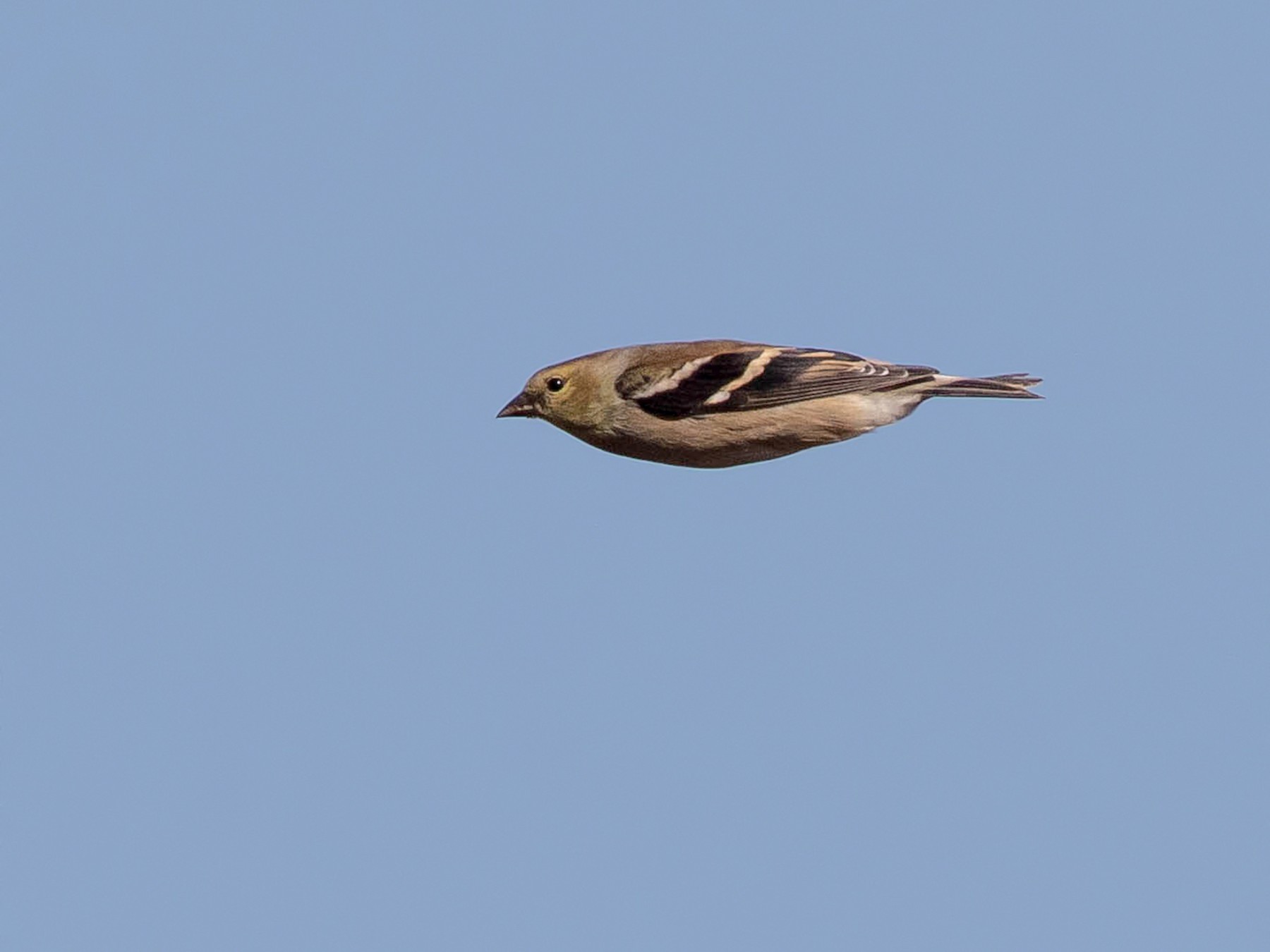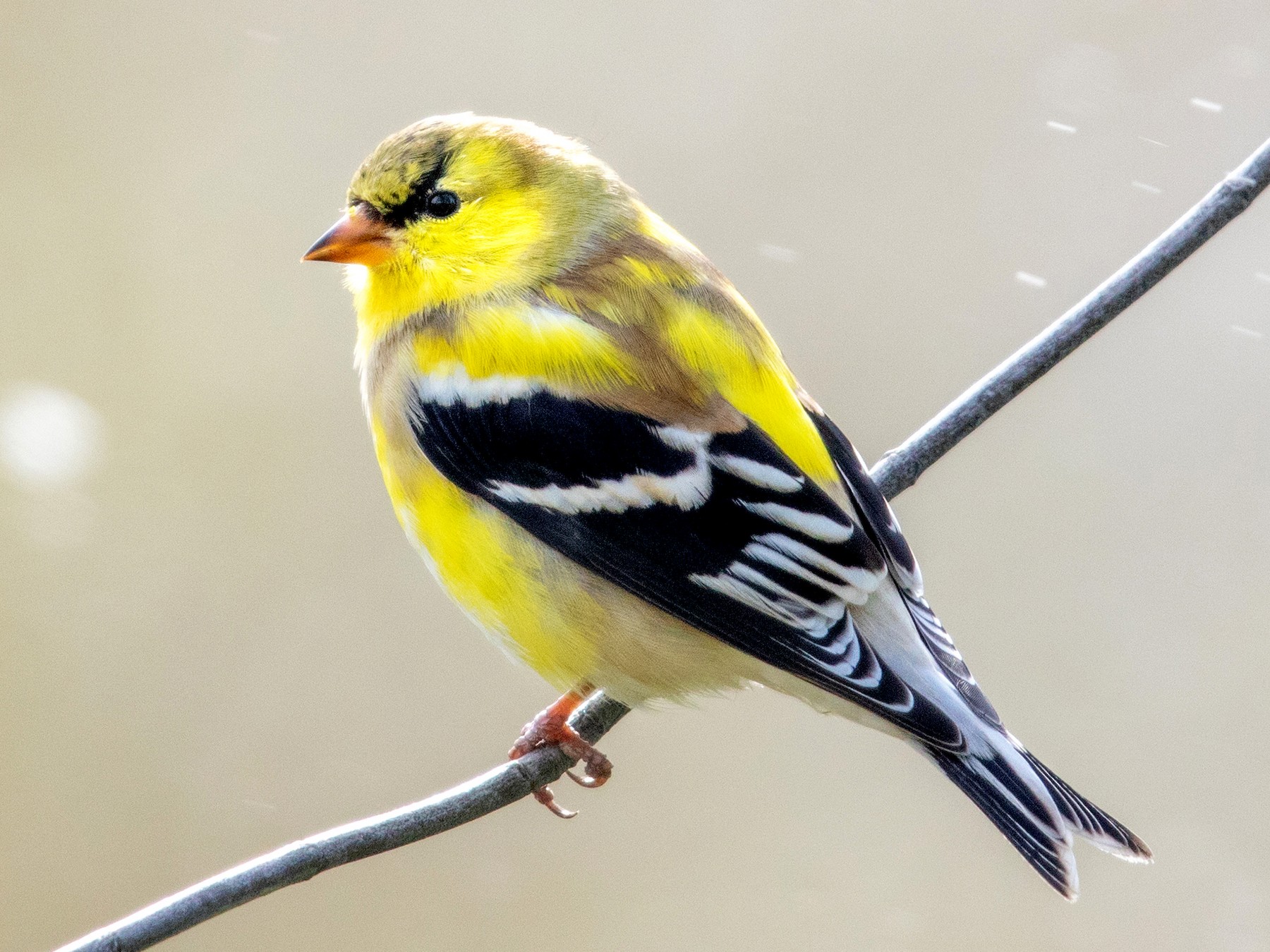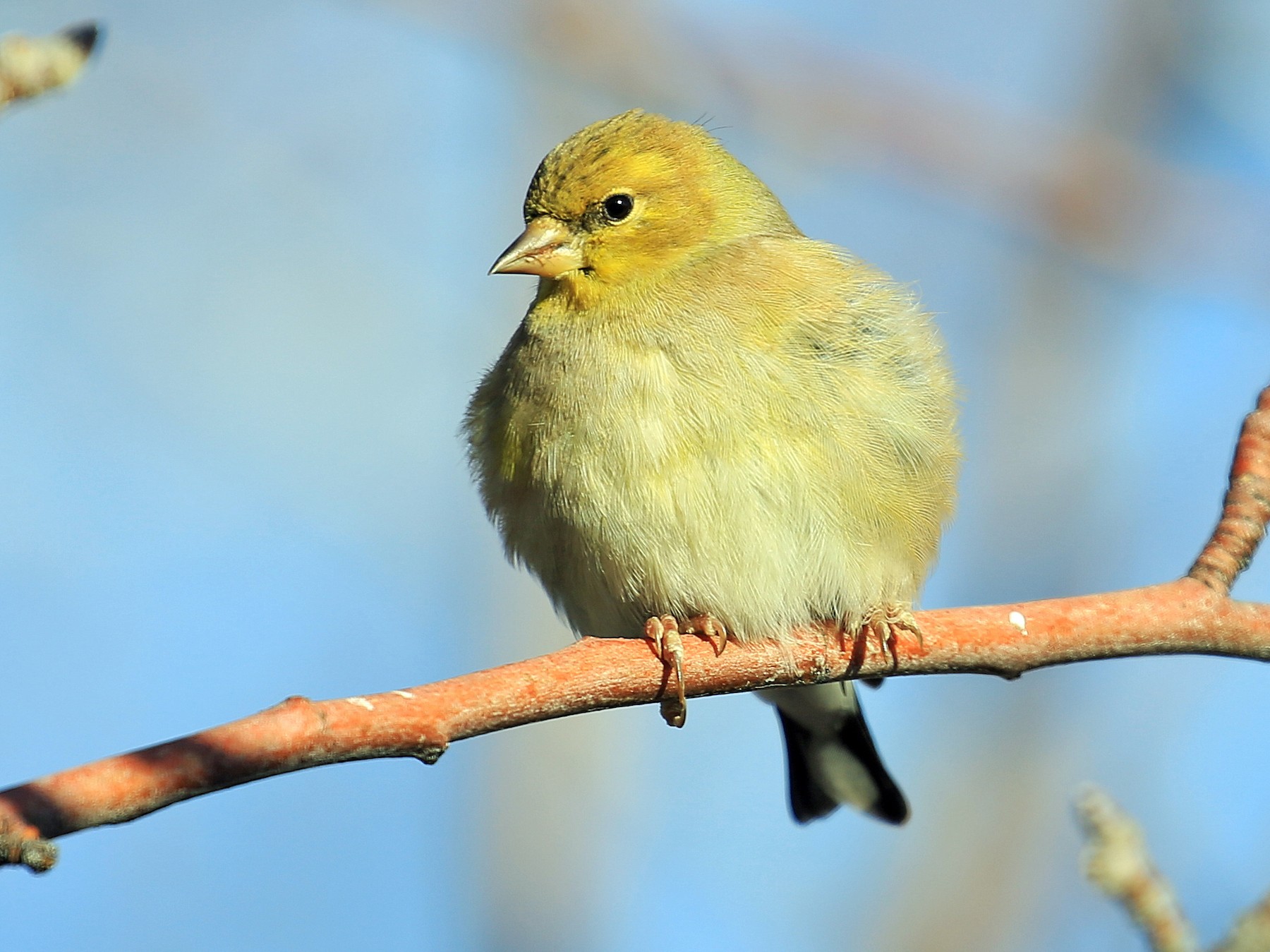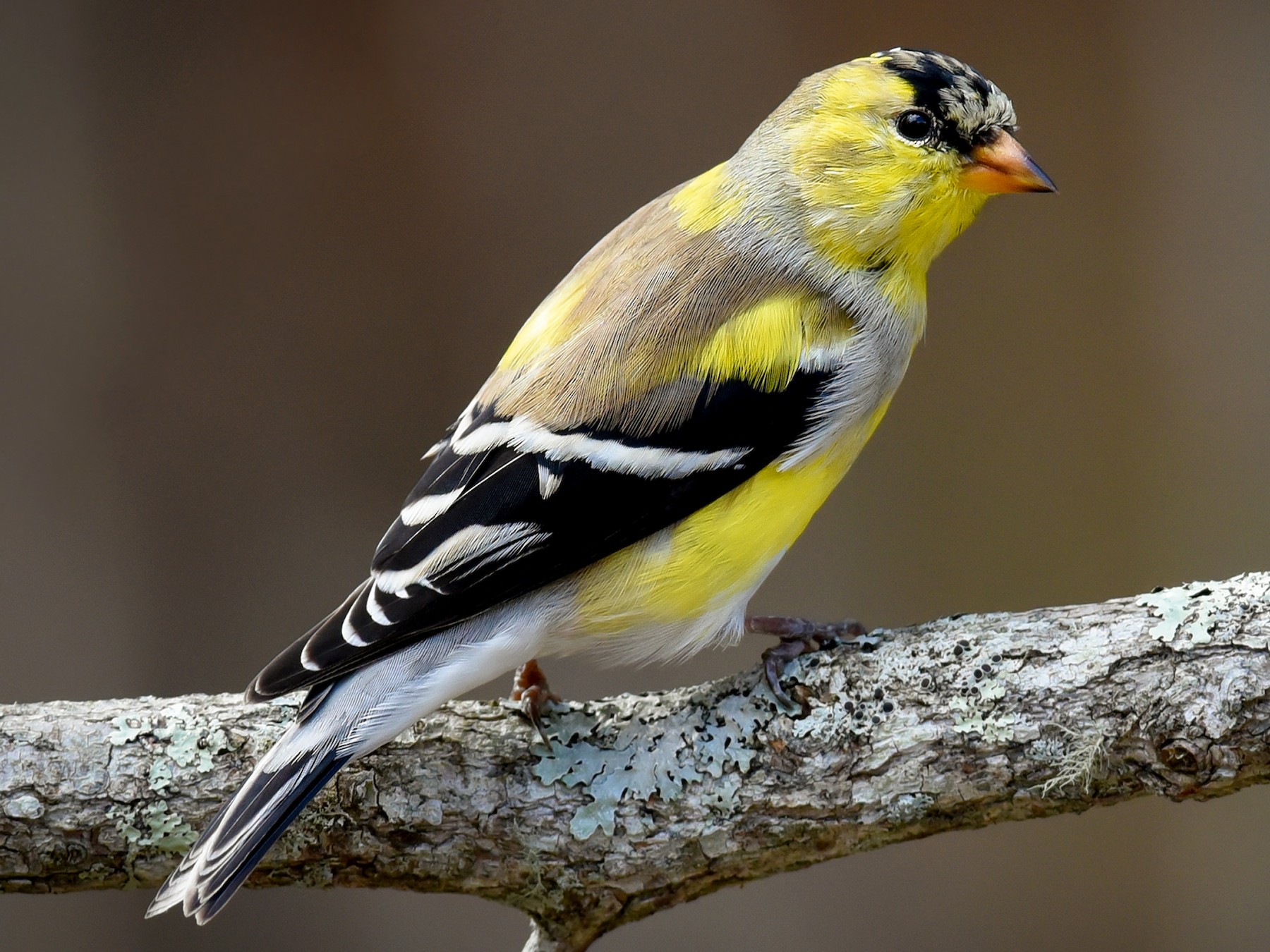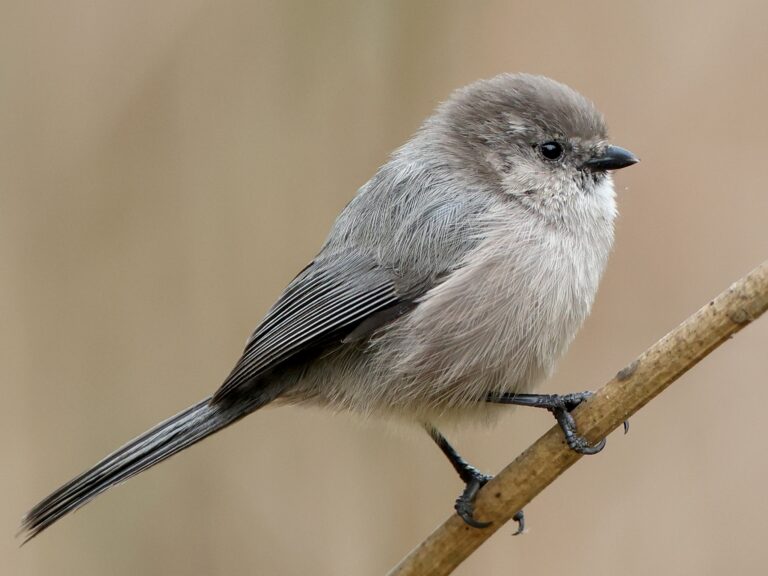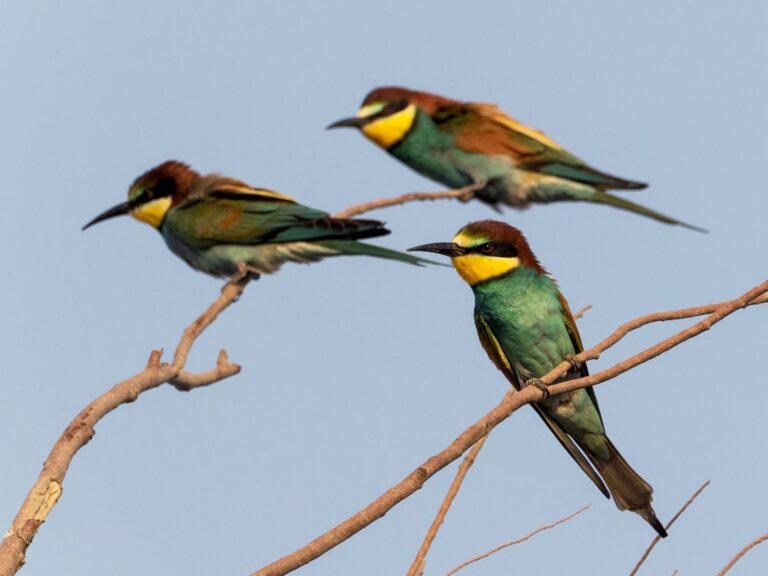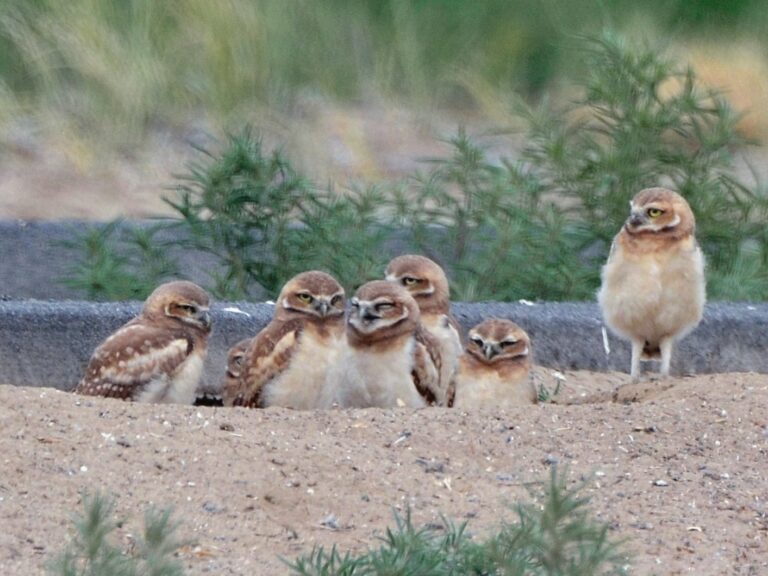American Goldfinch: Master of Color and Song in North American Gardens
The American Goldfinch is a vibrant and lively bird that captivates many birdwatchers across North America.
This small yellow bird is notable for its bright plumage, cheerful song, and unique feeding habits. Observers are often drawn to its adaptability and the way it forages for seeds, particularly from plants like thistles and sunflowers.
These finches are not only known for their striking appearance but also for their interesting breeding behaviors and seasonal changes in plumage.
As they transition from bright yellow to a more subdued brown in the winter, their adaptability to various habitats, from urban gardens to open fields, makes them a common sight.
Key Takeaways
- The American Goldfinch is known for its bright yellow feathers and cheerful song.
- These birds adapt well to various environments and have varied feeding habits.
- Their breeding cycle and seasonal plumage changes highlight their unique life patterns.
The American Goldfinch is an interesting bird known for its distinct appearance and classification.
Taxonomy and Identification
Understanding its taxonomy and identification helps in recognizing its features and differences between sexes.
Scientific Classification
The scientific name for the American Goldfinch is Spinus tristis. This species belongs to the finch family, Fringillidae, and is categorized under the subfamily Carduelinae.
The American Goldfinch is common across North America, found in various habitats from gardens to open fields.
These birds are migratory and in the winter, they often move south from their breeding grounds.
Physical Characteristics
The American Goldfinch exhibits striking physical traits. Males are often noted for their bright yellow plumage during the breeding season, which can make them stand out in any setting.
They have a black cap on their heads and black wings with white markings. Females, on the other hand, are more subdued in color. They have a yellow-brown hue, making them less noticeable. Both genders feature a slender body and a short, conical bill which allows them to feed on seeds easily.
Male vs Female Identification
Identifying male and female American Goldfinches can be straightforward once one knows what to look for.
Males are recognized by their bold bright yellow plumage, especially during breeding season. Male goldfinches also have a distinctive black forehead, while females lack this feature.
In contrast, females have a duller yellow-brown color with less distinct markings.
Distribution and Habitat
The American Goldfinch is widely distributed across North America. Its habitat preferences reveal critical information about where these birds thrive.
They are often found in areas rich with native plants, which provide essential food sources throughout their life cycles.
Geographical Range
American Goldfinches are found across much of the United States and Canada and down into Mexico.
These birds are commonly seen in the eastern and western regions, favoring cooler areas during the summer and migrating south for the winter. They inhabit open spaces and can often be spotted in parks, gardens, and rural fields.
Some populations may remain in certain areas all year round. The migratory behavior of these birds is influenced by climate and food availability, particularly during winter months.
Diet and Feeding Behavior
The American Goldfinch has distinct preferences that shape its diet and feeding methods. It primarily feeds on seeds from various plants and has developed unique foraging techniques.
Understanding these preferences can aid birdwatchers in attracting them to feeders.
Seed Preferences
American Goldfinches favor seeds over other food sources, with a strong preference for thistle seeds. These tiny seeds are high in oil, providing essential fats for energy. Goldfinches also enjoy seeds from sunflowers, daisies, and other wildflowers.
A few popular seeds they prefer include:
- Thistle (Nyjer) seeds: Rich in fat, ideal for energy.
- Sunflower seeds: A favorite among many birds, including goldfinches.
- Dandelion seeds: Frequently consumed during foraging.
Foraging Techniques
American Goldfinches exhibit acrobatic foraging skills. They can cling to plants and quickly move to access seeds. Their agile movements allow them to reach seeds in hard-to-access areas, especially when hanging upside down.
They often forage in small groups, which is a social behavior that improves foraging efficiency. Their preference for flower heads is evident in how they move from one plant to another.
Bird Feeders and Attracting Goldfinches
To attract American Goldfinches, specific types of bird feeders are effective. Feeders designed for thistle (Nyjer) seeds work best.
These feeders have small holes that prevent larger birds from accessing the seeds, giving goldfinches a competitive edge. In addition to thistle feeders, sunflower seed feeders can also attract them.
Gardeners can plant wildflowers, such as sunflowers and asters, to create a natural feeding habitat. Using bright colors and keeping feeders clean will further entice goldfinches to frequent the feeding area.
Breeding and Nesting Habits
The American Goldfinch has unique breeding behaviors and nesting habits that set it apart from other birds.
This section explores the timing of their breeding season, their courtship rituals, the construction of their nests, and details about their eggs and incubation.
Breeding Season Timing
The breeding season for the American Goldfinch generally starts in late spring and lasts through early summer. In most regions, this period spans from late June to mid-August. Timing can vary based on geographic location and food availability.
The goldfinch tends to synchronize its breeding with the blooming of certain plants, especially those that provide seeds, such as sunflowers. This strategy ensures enough food for growing chicks.
Courtship and Mating Rituals
Courtship in American Goldfinches involves vibrant displays and vocalizations. Males often sing soft, twittering songs to attract females and they perform aerial displays, flapping their wings and flying in circles.
Once a female shows interest, the male engages in feeding behaviors. He may offer her seeds as a way to bond. This courtship period can last several days before the pair mates and becomes more focused on establishing a nesting site.
Nesting Construction and Materials
Nesting construction is an important activity for American Goldfinches. They typically choose shrubs or trees, preferring areas where they can find cover. The nest is built primarily by the female and is made from various materials.
She often uses plant fibers, grasses, and spider silk. These materials make the nest sturdy yet flexible enough to accommodate growing chicks. Nests are typically deep and cup-shaped, providing a safe environment for the eggs and chicks. The choice of nesting site and materials helps protect against predators.
Eggs and Incubation
American Goldfinches lay 3 to 6 eggs per clutch. The eggs are typically pale blue or greenish in color with speckles. After laying the eggs, the female incubates them for about 12 to 14 days. During this time, the male may bring food to the female.
Once the eggs hatch, both parents share the responsibility of feeding the chicks. The young goldfinches will fledge about two weeks after hatching, leaving the nest to explore their surroundings.
Seasonal Changes and Molting
The American Goldfinch experiences notable changes in its plumage throughout the year, particularly between winter and summer. These seasonal shifts support their survival and adaptation in different environments.
Winter and Summer Plumage Differences
During summer, male American Goldfinches sport bright yellow feathers with black wings and a black cap, making them vibrant and easy to spot. In contrast, their winter plumage is more subdued.
They adopt a brown and olive coloration that offers better camouflage against predators. Females maintain a less vivid yellowish-brown tone year-round. This coloration helps them blend in with their surroundings, especially during nesting. The stark differences between the two seasons serve both mating and survival purposes.
Molting Process
The molting process for the American Goldfinch is significant. It typically occurs in late summer after breeding. During this period, they shed old feathers for new ones, which are often brighter and more vibrant.
Molting is physiologically demanding, requiring extra energy. It usually lasts several weeks. After completing this phase, males return to their striking summer appearance, which is crucial for attracting mates and competing for territory.
Adaptations in Fall and Winter
As fall arrives, American Goldfinches prepare for the colder months. They adapt by undergoing a complete molt, which equips them with feathers suited for winter conditions. This change enhances their insulation against the cold.
During winter, they often flock together to find food sources. Their less colorful plumage provides better protection from predators in the snow-covered landscape. They primarily feed on seeds, ensuring they have enough energy reserves to survive the harsher climate.
Frequently Asked Questions
The American Goldfinch is a unique bird with distinct characteristics, habits, and habitats.
Understanding these specifics can help birdwatchers and nature enthusiasts appreciate this colorful species better.
What distinguishes the American Goldfinch habitat from other bird habitats?
American Goldfinches prefer open habitats, often found in areas with weeds and wildflowers. They thrive in fields, gardens, and orchards. Their habitats contain ample seeds, which are essential for their diet and nesting materials.
How can one identify a female American Goldfinch?
Female American Goldfinches are less vibrant than males. They have a brownish-yellow plumage with a pale yellow underbelly. Their wings are dark with white wing bars, providing a contrast against their body color.
What is the typical size of an American Goldfinch?
The American Goldfinch is a small bird, typically measuring about 4.5 to 5.1 inches in length. It weighs around 11 to 20 grams. This small size helps it navigate through dense vegetation.
What does the American Goldfinch diet consist of?
American Goldfinches primarily eat seeds from plants such as sunflowers and asters. They also consume dandelion seeds and other weeds. Additionally, they may eat insects, especially during breeding season, to provide protein for their young.
What is the range of the American Goldfinch across different seasons?
During the breeding season, American Goldfinches are widespread across Canada and the northern United States. In winter, they migrate to southern regions, including the southern United States and parts of Mexico. Their migratory patterns depend on food availability.
How can you differentiate between a Yellow Finch and an American Goldfinch?
While often confused, the American Goldfinch has a more vibrant yellow color and a black cap on males. Yellow Finches may appear duller and lack the distinctive black cap. Additionally, the American Goldfinch’s flight pattern is more fluttery and bouncy compared to Yellow Finches.
